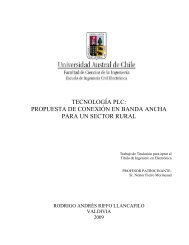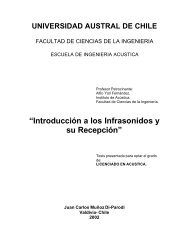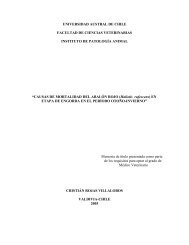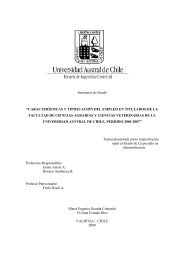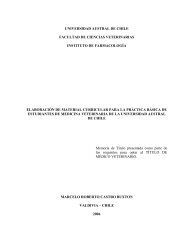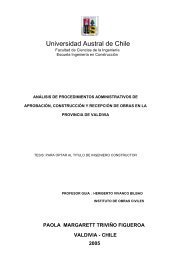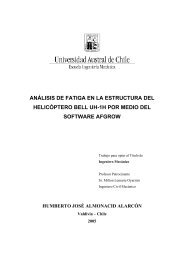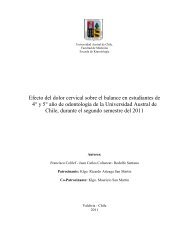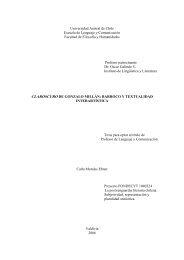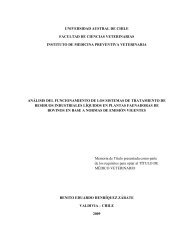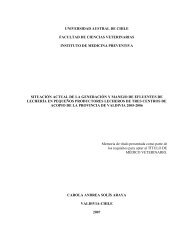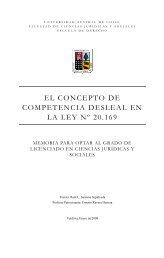Diversidad y control biológico de insectos - CyberTesis UACh ...
Diversidad y control biológico de insectos - CyberTesis UACh ...
Diversidad y control biológico de insectos - CyberTesis UACh ...
Create successful ePaper yourself
Turn your PDF publications into a flip-book with our unique Google optimized e-Paper software.
Multivariate statistics. Principal response curves (PRC) were used to analyze the time and<br />
treatment-<strong>de</strong>pen<strong>de</strong>nt multivariate response of non-target assemblages. Background of this<br />
multivariate analysis is given by van <strong>de</strong>n Brink and ter Braak (1999). In brief, this method<br />
summarizes all the information of the recor<strong>de</strong>d assemblage simultaneously. The principal<br />
response, which is a weighted sum of the abundances of the taxa, was expressed as a<br />
canonical coefficient and reflected the behavior of the treated assemblages relative to the<br />
untreated <strong>control</strong> (Dively and Rose, 2002). In addition, PRC makes assemblage-level<br />
responses easier to plot and interpret and can <strong>de</strong>al with the large number of zeros often<br />
found in ecological community data.<br />
Monte-Carlo permutation tests (1999 permutations) were used to test the significance of the<br />
treatment effects (<strong>de</strong>partures from the zero <strong>control</strong> line) at each sampling date. The partial<br />
redundancy analysis and MC testing were performed on CANOCO software version 4.53<br />
(ter Braak and Smilauer, 1998). Input data were log(x+1) transformed for analysis.<br />
CANOCO outputs were used to calculate the PRCs in a spreadsheet using the formula:<br />
Cdt = (TAU x Regr:AX1) / SD (1)<br />
Where Cdt = standardized canonical coefficients; TAU = total standard <strong>de</strong>viation of the<br />
species data; Regre:AX1 = Regression/canonical coefficients for standardized variables;<br />
and SD = standard <strong>de</strong>viations of environmental variables.<br />
Results.<br />
Over 4111 specimens were enumerated and the numerically most important taxa were the<br />
carabid beetles (42%), oribatid mites (20%), gnaphosid spi<strong>de</strong>rs (16%) and curculionid<br />
weevils (8%). The remaining taxa accounted by the 14%. In terms of ecological<br />
functionality, 61 % of the invertebrates were predators, 11 % were herbivores and 28 %<br />
were <strong>de</strong>composers.<br />
Spore persistence.<br />
The spore persistence on foliage and soil is shown in Figure 1. Before treatment, B.<br />
bassiana spore number was 1,7 x 10 4 CFU/dry soil gram. One day after treatment, B.<br />
bassiana spores increased by 70% (2,8 x 10 4 CFU/dry soil gram), but numbers dropped to<br />
pre-treatment level by day 15. Spores in foliage peaked 82 CFU/cm 2 , but the number<br />
<strong>de</strong>creased to almost zero one week after spraying.<br />
81



